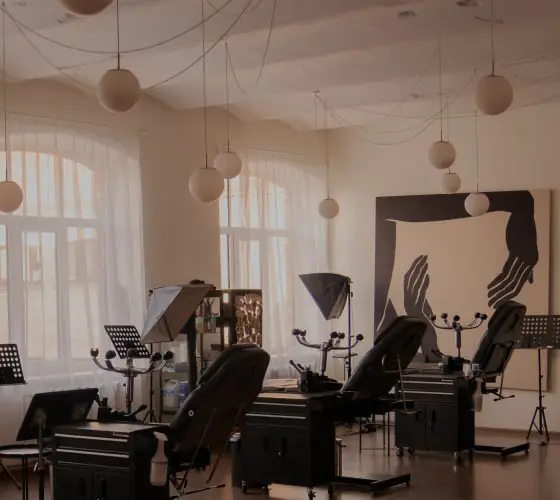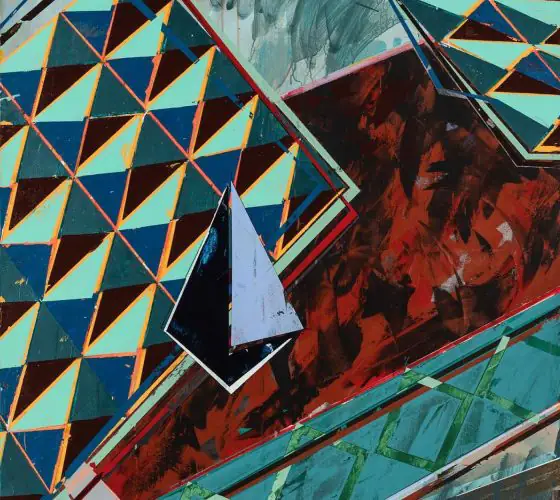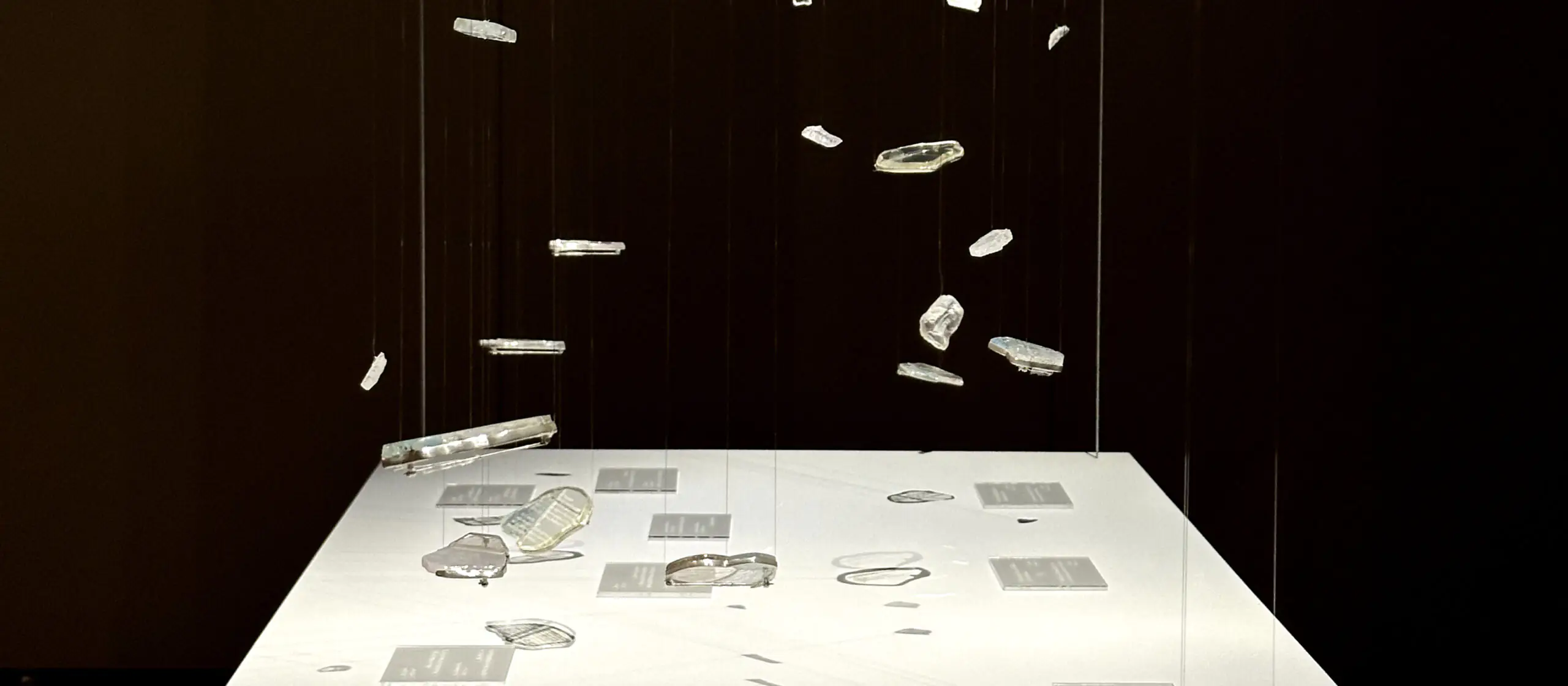
Let’s start with the background – tell us when, how and for what purpose the Latvian Jewellery Art Association was founded.
It all started in 2017 when the Museum of Decorative Arts and Design hosted an exhibition called “Synergy”, which featured artists who work with metal for jewellery, as well as a range of objects and design elements. After this exhibition, Zane Vilka had the idea to found a society that would help these artists keep in touch. In the summer of 2020, I and the artist Māris Šustiņš joined the board of the society.
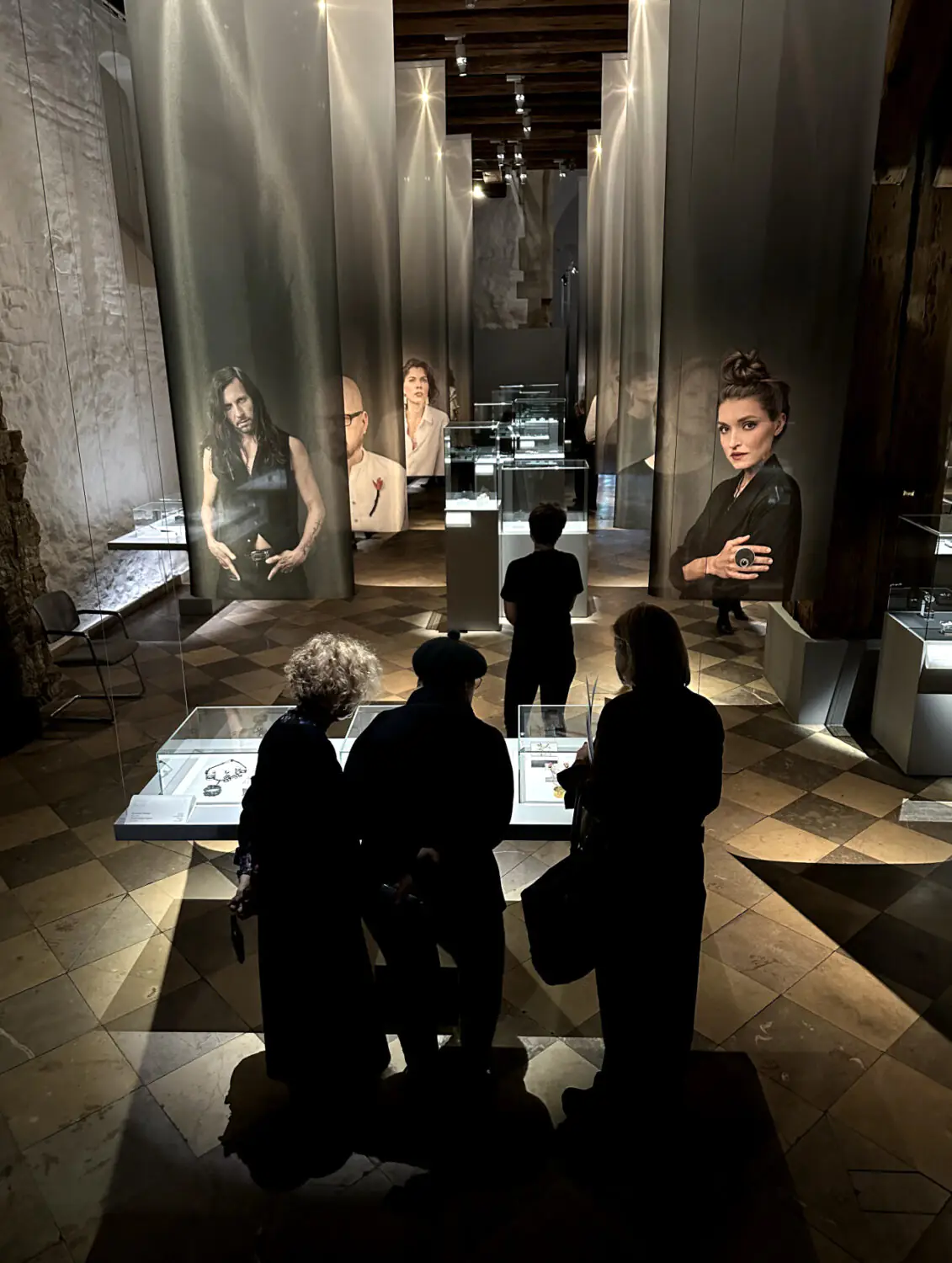
Right from the start, we agreed that artists with an academic background in jewellery or an artistic discipline in general could apply to become part of the association.
One crucial thing we all share is the desire to participate in joint exhibitions. Becoming a legal entity opens up the possibility to enter various competitions, obtain funding and represent artists’ interests. There are things that an artist often cannot do alone.
Why do people buy artisan jewellery nowadays – is it more about status, self-expression, perhaps a reflection of their inner world?
I see several reasons why people prefer jewellery made by artists to mass-produced alternatives. The first is quality. An individual artist’s jewellery comes with working-conditions, which means a specific piece can be repaired and restored.
The second reason is the emotional attachment. Jewellery is still a common gift or memento which we bring back from our travels.
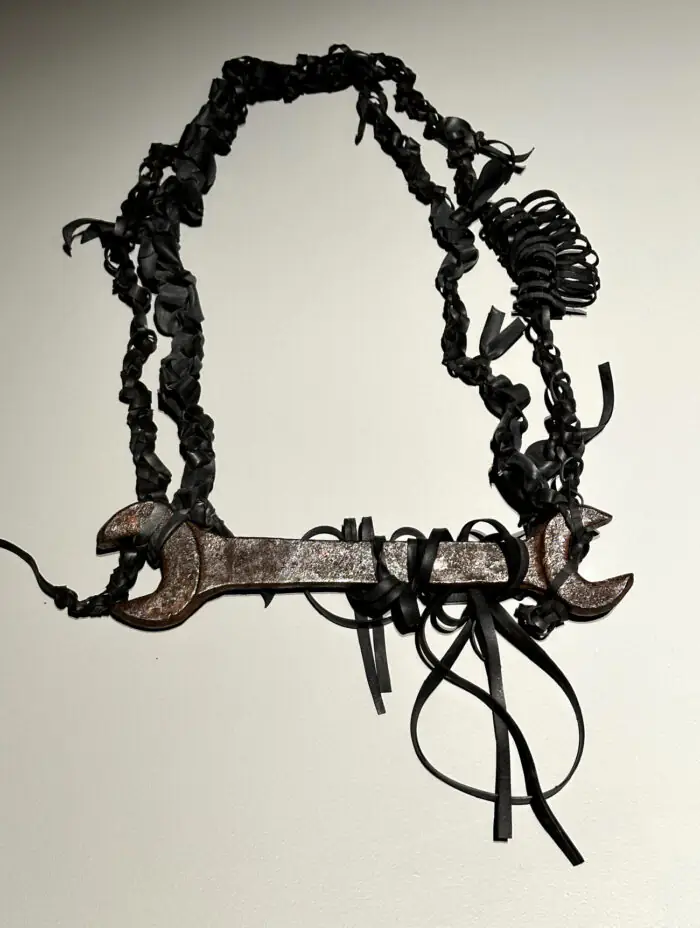
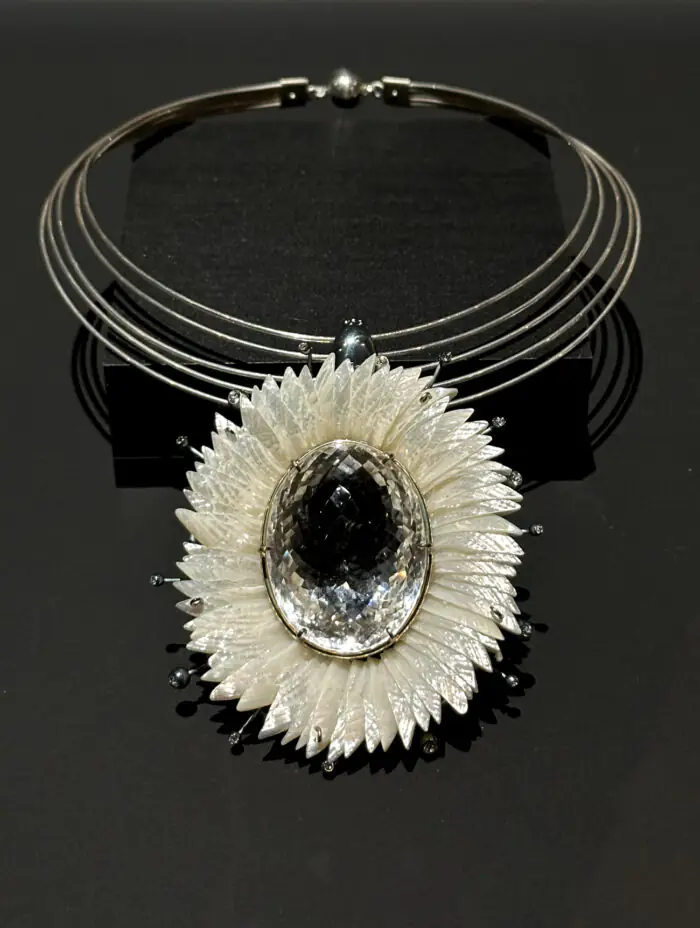
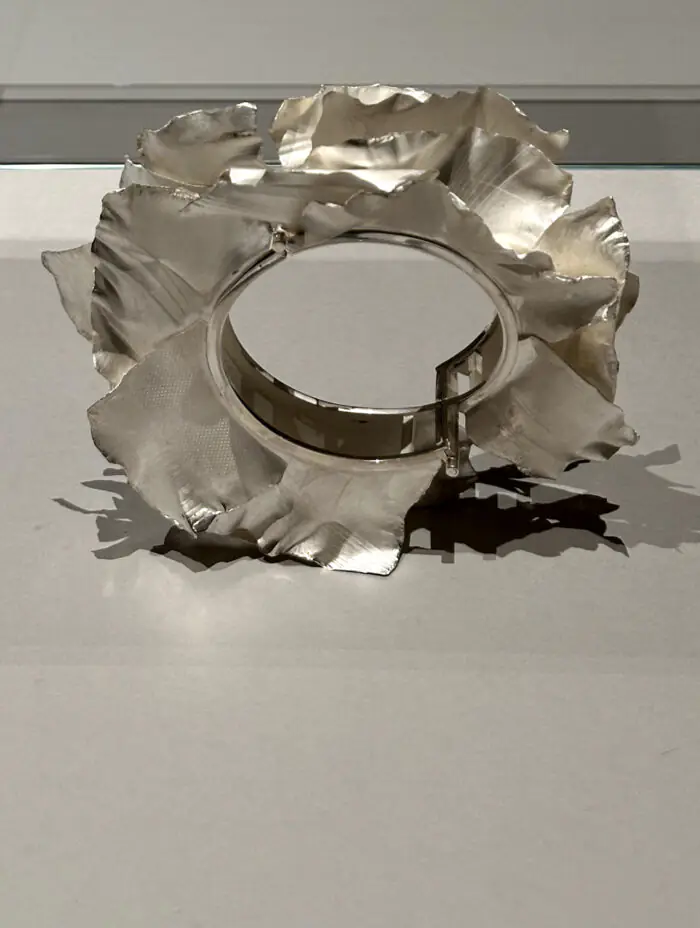
And people still have an interest in collecting. During the exhibition, we recorded comments from owners about their experiences and thoughts related to the artists’ work. They often mention that good-quality jewellery can be passed down from generation to generation. In the recording you can also hear comments that this jewellery gives “strength”, and strength bolsters the wearer’s self-confidence.
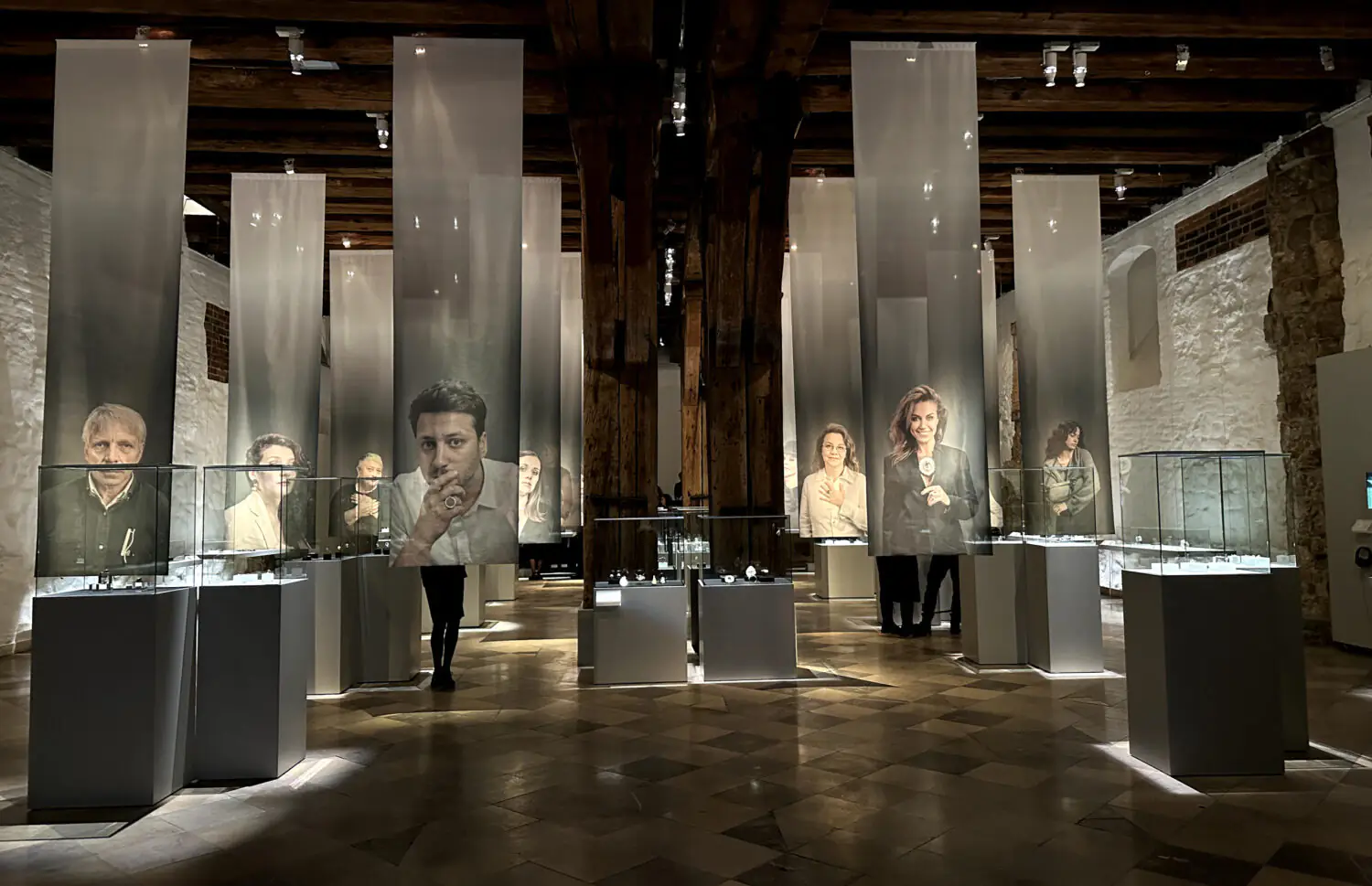
In the past, jewellery was passed down through the generations without losing its value. But that refers more to gold, silver and precious stones. Now, when jewellery is made of an array of materials, does that mean that it is less valuable?
Cheaper materials do lose their “hereditary” essence because they degrade over time- plastic is not durable, that’s just a fact.
Personally, I am part of a new generation of artists: I tend to avoid classic materials such as gold, silver and precious stones. I prefer to go on a quest to find and use recycled or discarded materials.
I don’t think the tendency to replace expensive materials with cheap ones is necessarily a bad thing. It’s essential to understand why a particular material was used. If it was chosen because the artist was thinking about sustainability, for example, then it was certainly justified. Whatever material we use, we still have the idea, the artistic concept of the product, don’t we? That’s the valuable element.
Are there such categories as good or bad jewellery?
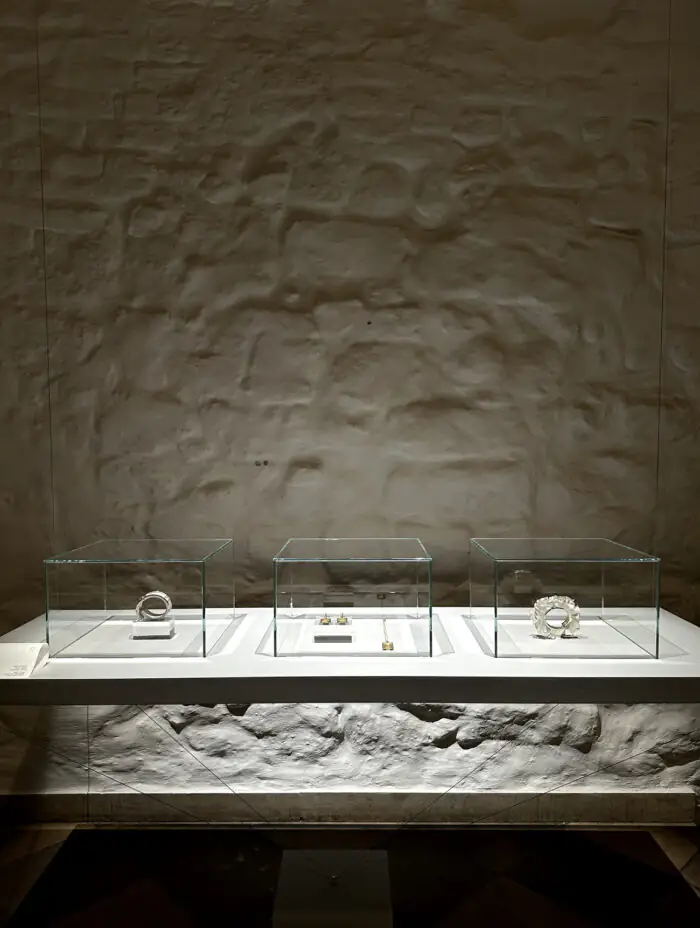
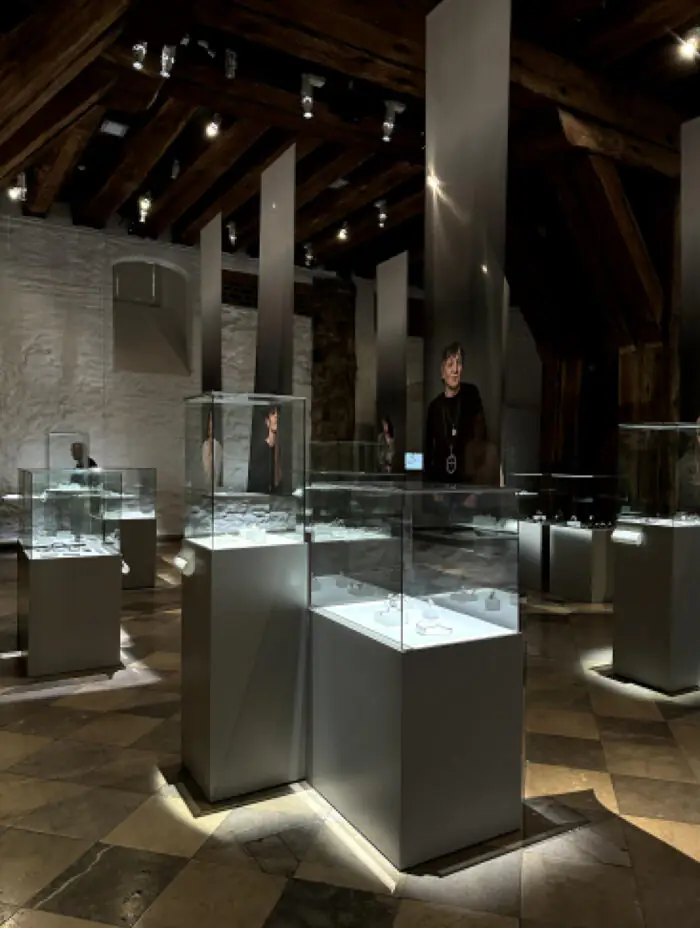
I avoid dividing into “good” and “bad”, because everything is relative.
On the one hand, good jewellery is high-quality, it’s about a high level of craftsmanship, ergonomics and user-friendliness. However, according to one’s taste, experience, age and lifestyle, one can opt to choose a piece of jewellery made of cheaper materials that they simply don’t mind breaking or losing.
The Jewellery Art Association seeks to emphasise a high level of craftsmanship while maintaining an artistic, research-oriented interest in the field.
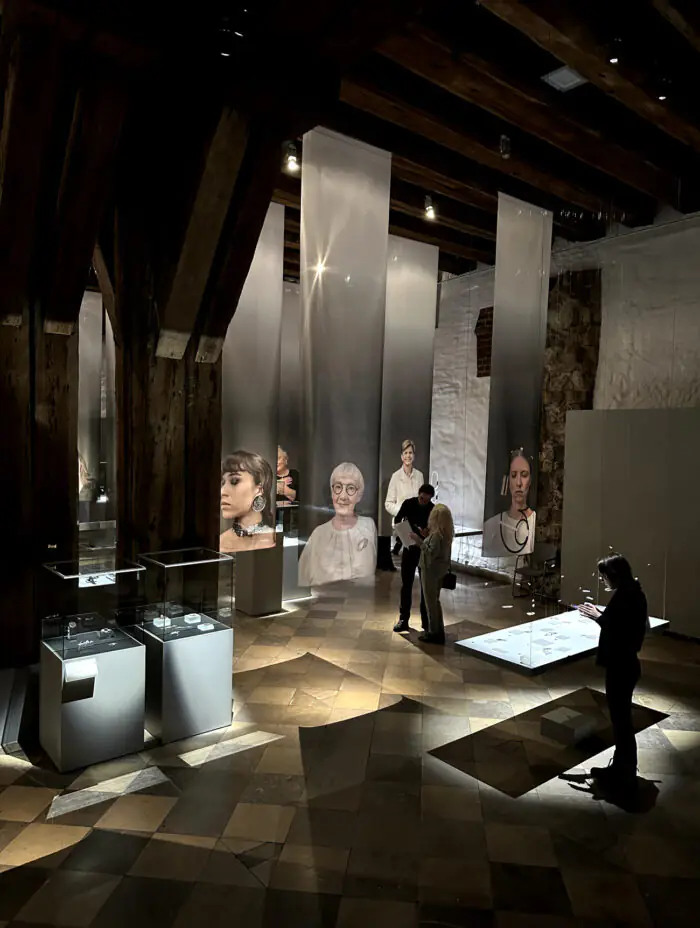
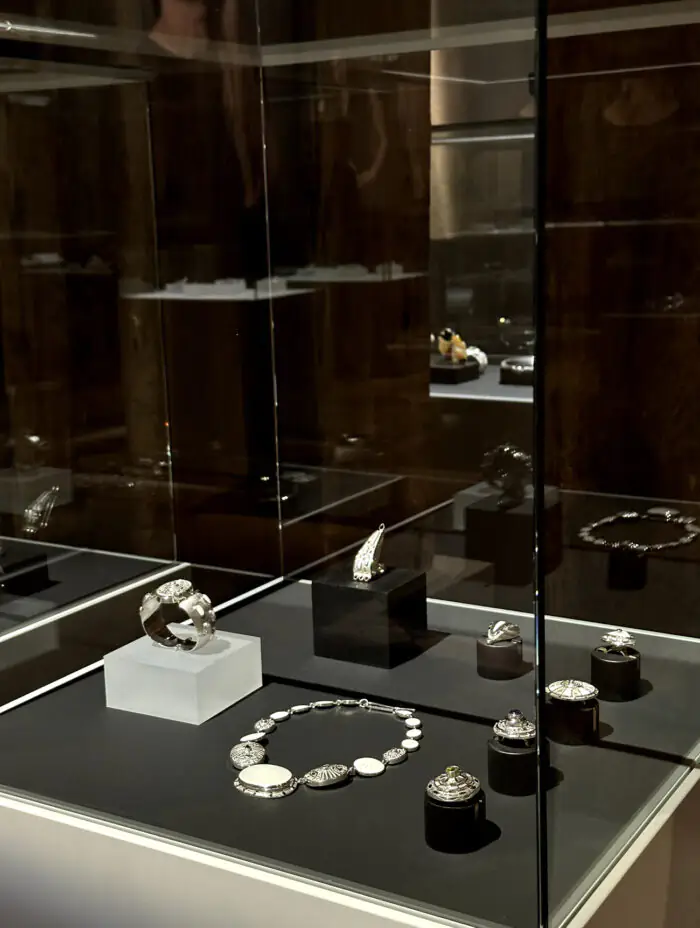
Can any object become a piece of jewellery?
I like this question very much, because I myself do research on contemporary jewellery. The question is whether we can and where exactly to draw the line between what is jewellery and what is not. And the answer is most likely: we can draw the line wherever we want.
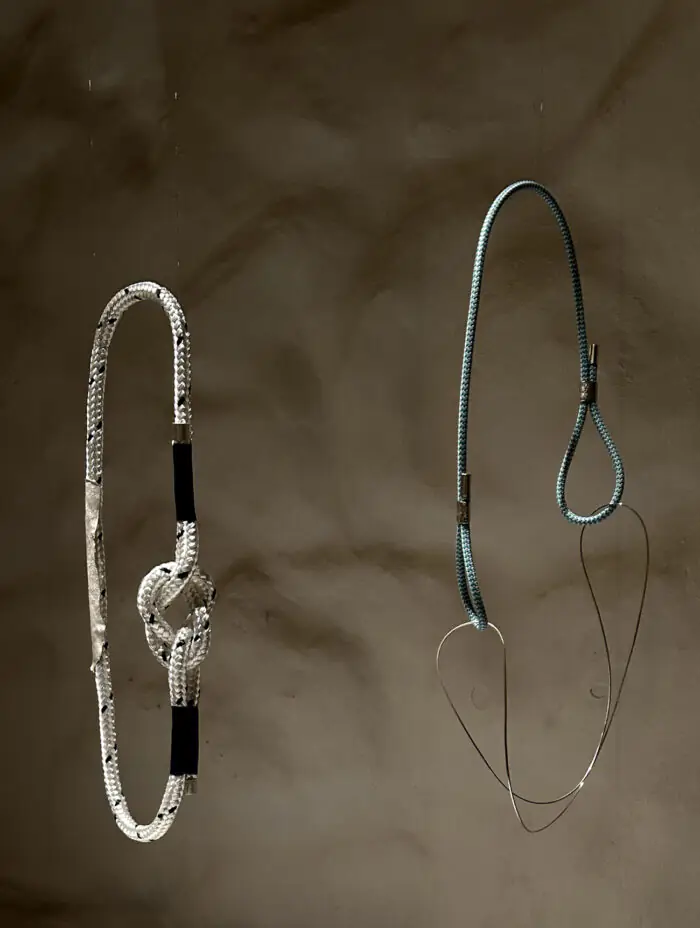
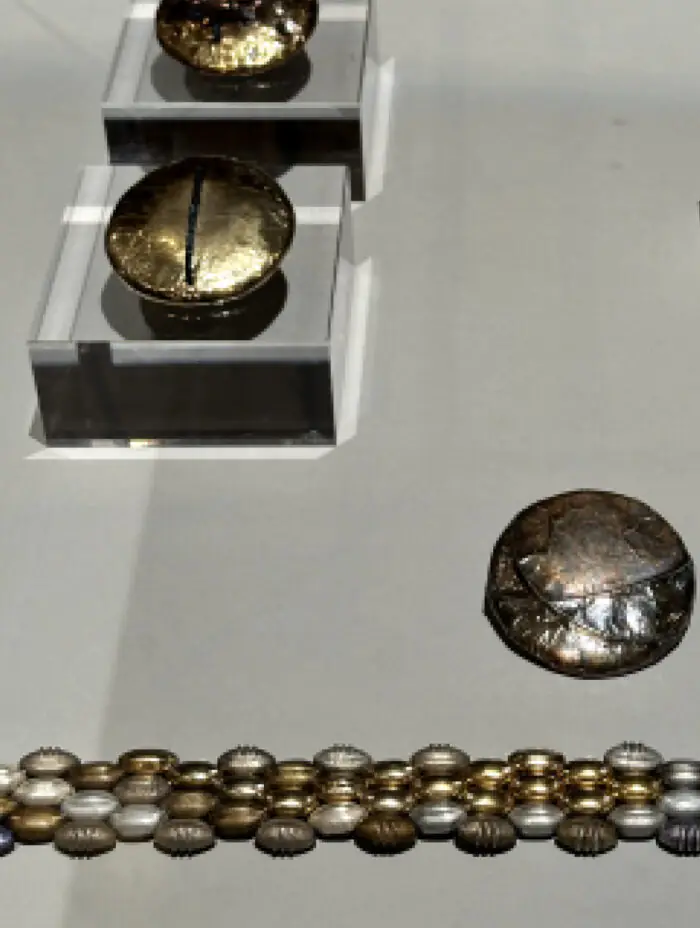
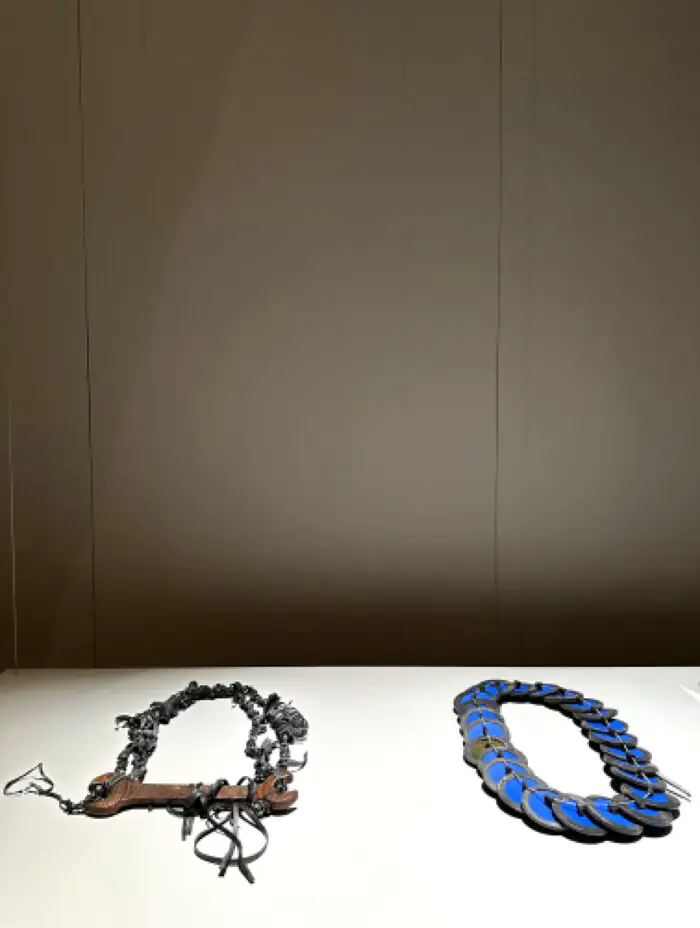
When I was studying in France as part of an Erasmus exchange programme, I met a great jewellery artist and professor, Monika [Brugger]. She talked about the history of contemporary jewellery and emphasised that you can push the boundaries infinitely. Then I started to pay more attention to decorative elements of buildings in the urban environment, I started to wonder whether Christmas tree decorations are jewellery or not. After all, a banner on a building can be classified as an accessory! A hair band on your wrist could be jewellery. I like the fact that there is now a trend to broaden this concept.
Let’s talk about the identity of Latvian designers. Can we say that there exists a national character which distinguishes our jewellery?
I’ll try to highlight some of the most characteristic ideas.
First of all, if we look at professional jewellery designers, education is crucial. The older generation of artists were educated at the Estonian Academy of Fine Arts. The school largely determines the way in which a stone is processed, contained and shaped. Many artists are inspired by the Estonian school and follow certain principles. The middle generation, artists like Māris Šustiņš, Zane Vilka, choose to emphasise the traditional, classical values of jewellery – luxury, splendour and decorating as celebration.
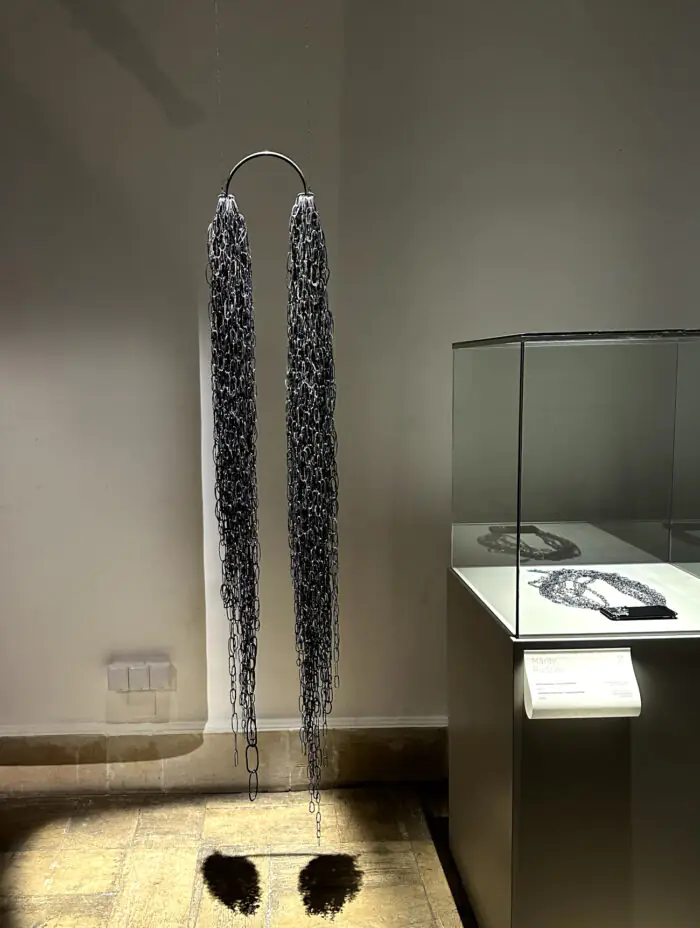
The new generation is characterised by a search in line with contemporary developments in the world. Latvia is, after all, a post-Soviet country, and for a long time it was forbidden to work with silver (editor’s note – in the USSR it was forbidden to work with precious metals at a national level). We can speculate that this is one of the reasons why, for example, working with amber was so popular here. At the end of the twentieth century, there was a kind of backlash: some artists and teachers wanted to use as little amber as possible. People simply wanted something new and the freedom of choice. Now that freedom exists. By the way, we are coming back to amber again.
Is jewellery-making always about creative inspiration? Or with routine hard work?
It’s a tough day-job.
Pure inspiration and creativity is a myth. The biggest frustration in the creative professions is that the practice can be as stressful as the office. The only difference is the physical aspect: to make jewellery you have to work with your hands. Metalworking is a labour-intensive process: grinding, filing, shaping, etc.
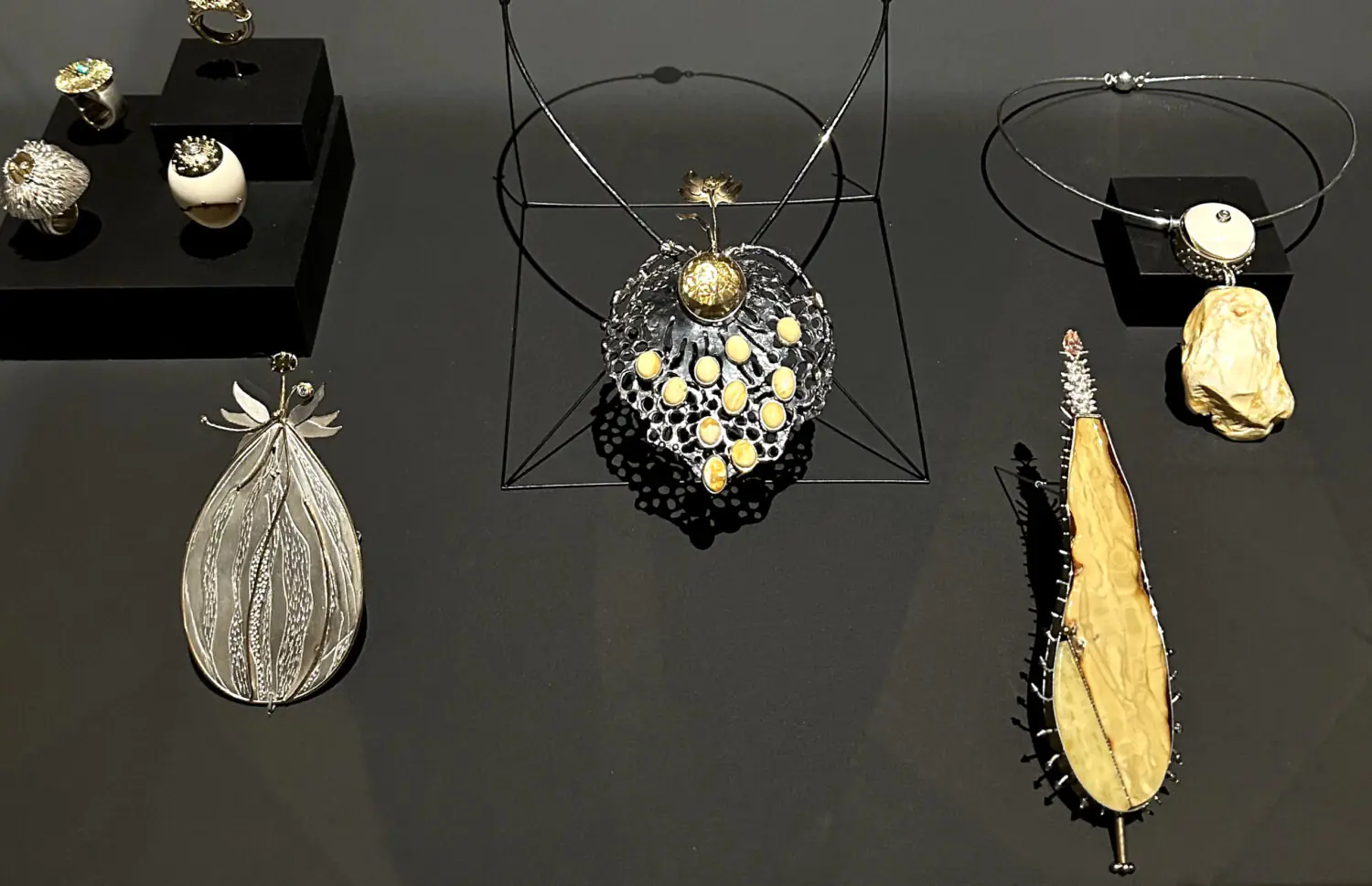
Can jewellery be self-contained, or does it live in tandem with the person who wears it?
Both are possible. There are jewellery pieces that live on their own, while others can look “naked” without a wearer. It all depends on the specific piece.
Our exhibition, which is going on at the moment, is very much about the baton being passed to the person who wears the jewellery. The artist is the first to give life to the object, and the wearer the second. But that doesn’t mean that he will always wear it; maybe he will have it on his shelf. Maybe he will use it once a year, and that might be enough.
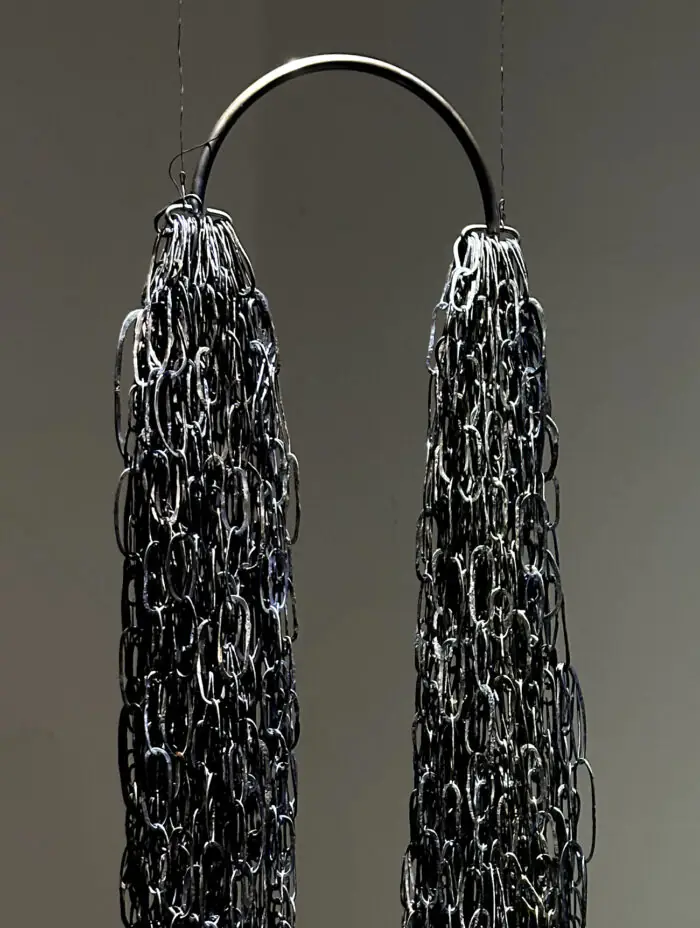
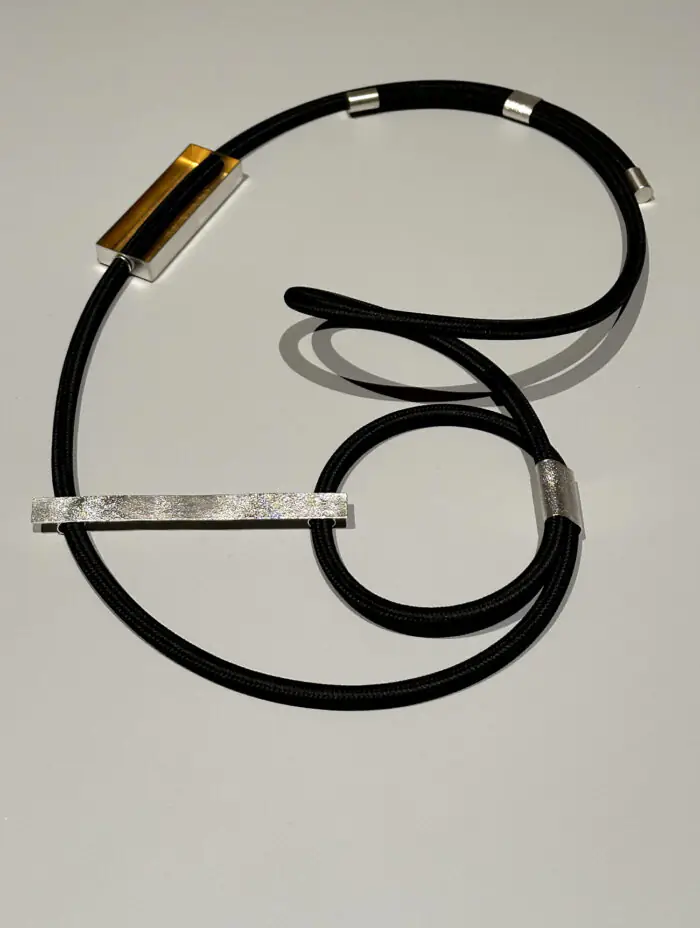

The exhibition opened on the 8th of February. How did the concept of the exhibition come about – to put the person who chooses to wear the jewellery and the personality of the designer at the centre?
We decided to put the viewer in the spotlight because that is what distinguishes jewellery from other applied arts.
Jewellery design is often classified in the same “box” as ceramics, for example.This is not always accurate – in jewellery it is proportion in relation to a person that is important. Jewellery is made to be in contact with a person. It is this proportional factor that is crucial and which distinguishes jewellery from other art forms.
That’s why we wanted to focus on individual wearers. Each artist approached a client or a person close to them with an offer to participate in the project. The exhibition will showcase people of different ages and walks of life.
What is the most interesting thing about the exhibition in your opinion?
The most interesting thing is the whole; it fulfills the notion of experiencing a piece of jewellery. I can highlight the opportunity to look into the “kitchen”, the artist Rasma Pušpure captured the artists’ in the studio during the creative process. The educational programme gives us the opportunity to communicate with the authors.
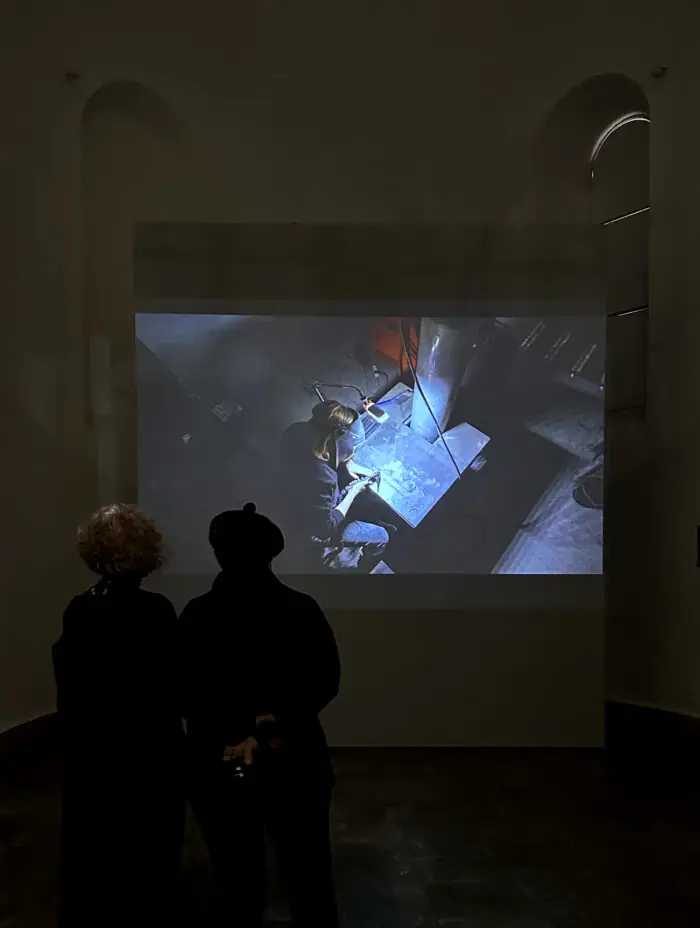
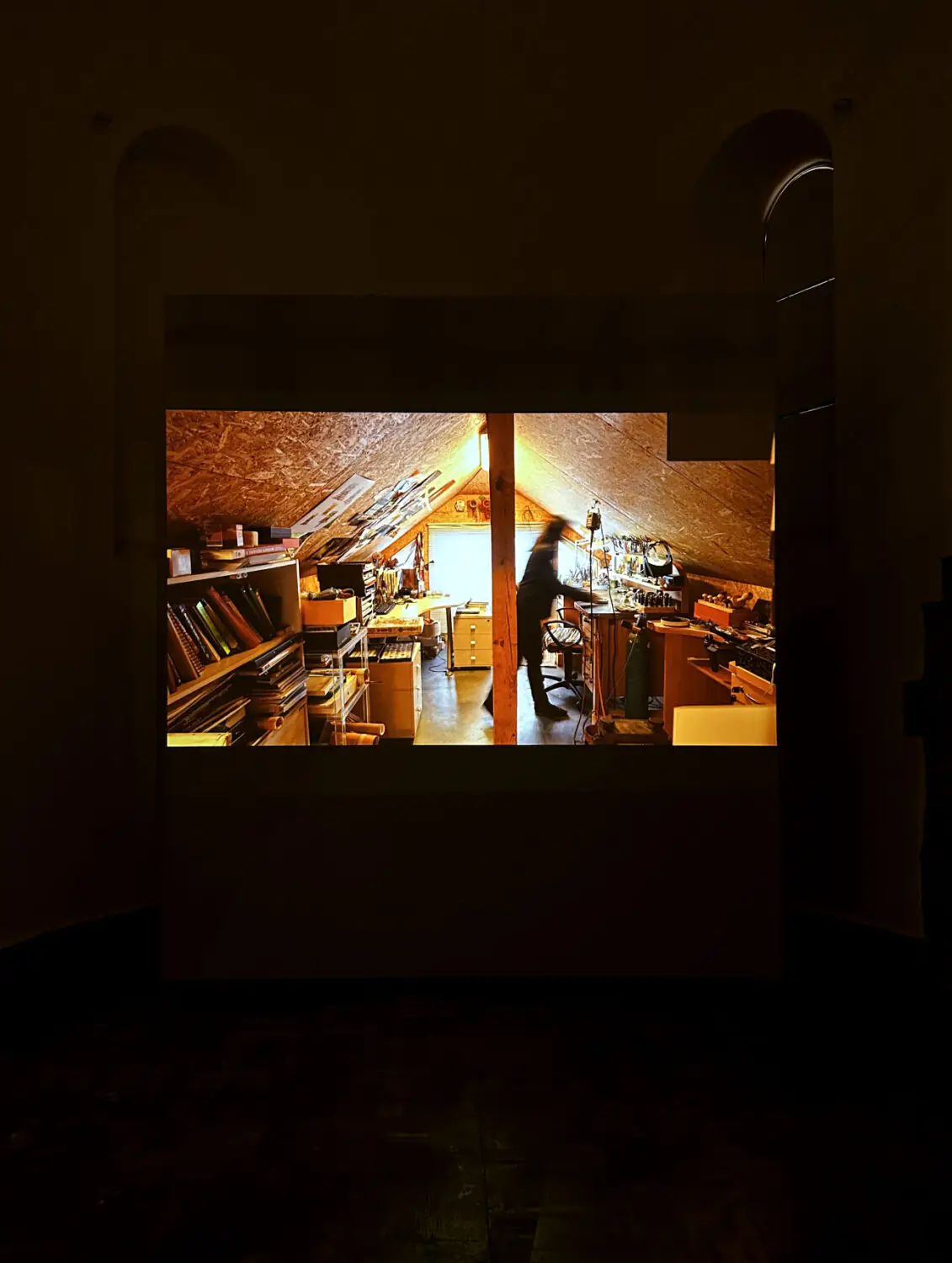
In addition to the pieces in display cases, the exhibition also features portraits of the jewellery owners taken by Mārtiņš Cīrulis. An added layer of atmosphere is created thanks to the sound installation by Pēteris Pāss. The set designer Ilze Ķēniņa planned the layout of the space, which she calls “the jewellery maze”. The exhibition is accompanied by a visual “identity” created by graphic artist Elton Kuhn.
The event’s programme is published on the museum’s website. I think it will be quite rich, involving different senses: you will be able to hear as well as see. I don’t want to reveal everything in advance, I invite you to see the exhibition for yourself.

